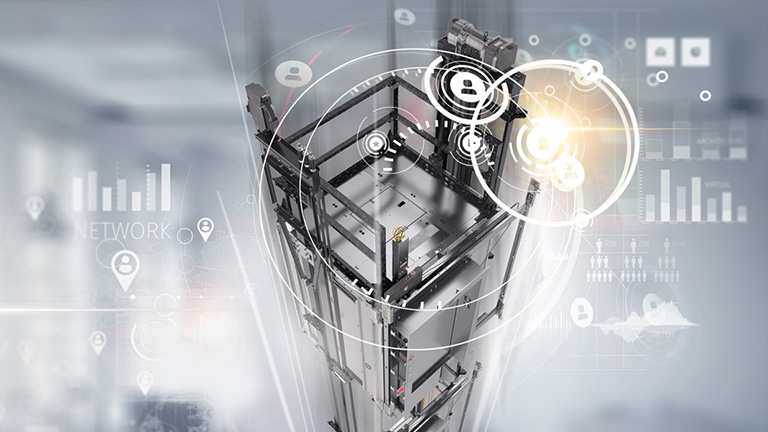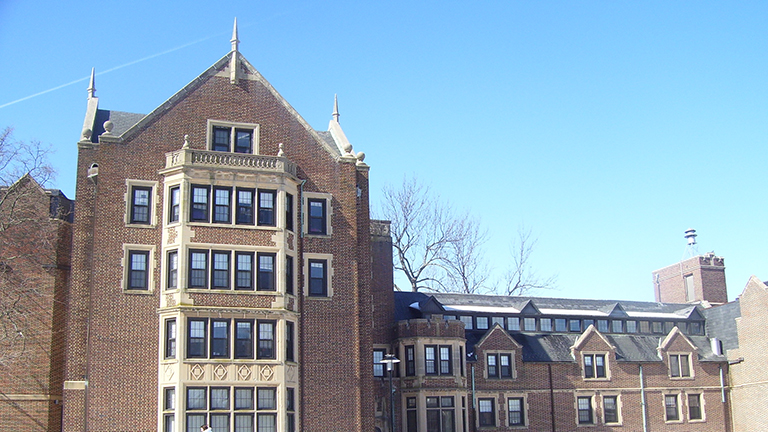An Accessible Distinction
Though there are a number of similarities, platform lifts and elevators differ on one major defining point: accessible design.
Below, we explore details of both platform lifts and elevators, as well as provide a few common examples of each and their main noticeable attributes.
Platform Lifts
Platform lifts, also known as wheelchair lifts, are standalone units specifically designed to provide access in locations where the installation of an elevator would be either impossible or impractical. As such, platform lifts assist individuals in overcoming smaller architectural barriers, such as stairs, stages, or porches. Unlike elevators, platform lifts are available in permanent and portable configurations. This flexibility in design enable wheelchair lifts to provide access to locations, services, and events in a wide variety of public and private settings, including both indoor and outdoor areas. Furthermore, the ASME A18.1 Safety Standard for Platform Lifts and the Americans with Disabilities Act (ADA) accessibility code govern the design and use of platform lifts.
Three Common Platform Lift Types:
- Vertical Platform Lift (VPL): Also known as a porch lift, VPLs travel up and down using a platform large enough to easily and comfortably accommodate a wheelchair or other mobility device, such as scooters and walkers. VPLs transport their passengers to or from the top of a barrier, i.e. a porch, stage or staircase. Because of the wide range of places where such barriers may be present, VPLs are more common than other platform lifts.
- Inclined Platform Lift (IPL): These lifts transport their passengers diagonally across a barrier rather than over it. For example, an IPL moves along a railing installed along a barrier, such as a staircase or adjacent wall, transporting its rider along the railing path and across a staircase to the upper or lower landing. In addition, an IPL may be folded up to provide more space when not in use. However, due to their installation requirements, IPLs are less common than VPLs.
- Chair Lifts: Of the three lift types detailed here, chair lifts feature the lowest weight capacity and are the only ones to provide a seat rather than a platform to transport their passengers. As such, this type of lift is not considered ADA compliant as it requires the rider to leave his/her wheelchair or other assistive mobility device behind in order to ride. Therefore, chair lifts are typically used residentially and should be considered for individuals whose mobility restrictions are not severe.
Elevators
Elevators require a large amount of space for installation, as a shaftway is necessary to hold the elevator lifting mechanisms. This space requirement tends to make an elevator less practical for smaller buildings and private homes. In addition, elevators have a substantial load capacity, making them more suitable for concurrent passenger and freight carry. Incidentally, elevators are subject to the ASME A17.1 Safety Code for Elevators and Escalators and in most cases, the ADA accessibility standard.
Three Common Elevator Types:
- Passenger Elevators: This type of elevator transports people between floors in a tall building, office, or hotel. As such, a passenger elevator’s capacity typically varies between 5 and 25 people. However, it is the specific building size and need of the building which determines max occupancy of a passenger elevator.
- Elevators: A specialty passenger elevator, express elevators transport their riders over many floors without stopping. As such, express elevators do not service all floors; rather, they connect long distance sections of a large building, such as a lobby to a sky-walk.
- Freight Elevators: These elevators transport products and materials exclusively. As such, they maintain greater weight capacities than either passenger or express models, generally between 4,000lbs to 10,000lbs.
In summary
Wheelchair lifts:
- Available in both permanent and portable models;
- Single passenger use by an individual with either temporary or permanent disabilities; and
- Limited load weight and rise capability compared to most elevators.
Elevators:
- Require permanent installation, typically in tall buildings with many floors;
- Designed to carry many passengers or heavy freight; and
- Require a large amount of space for installation
For further information regarding wheelchair lifts, read, “Choosing a Wheelchair Lift.”
For information regarding elevators, ThyssenKrupp Elevator has a specifications generator for placing an elevator in your business or home.



